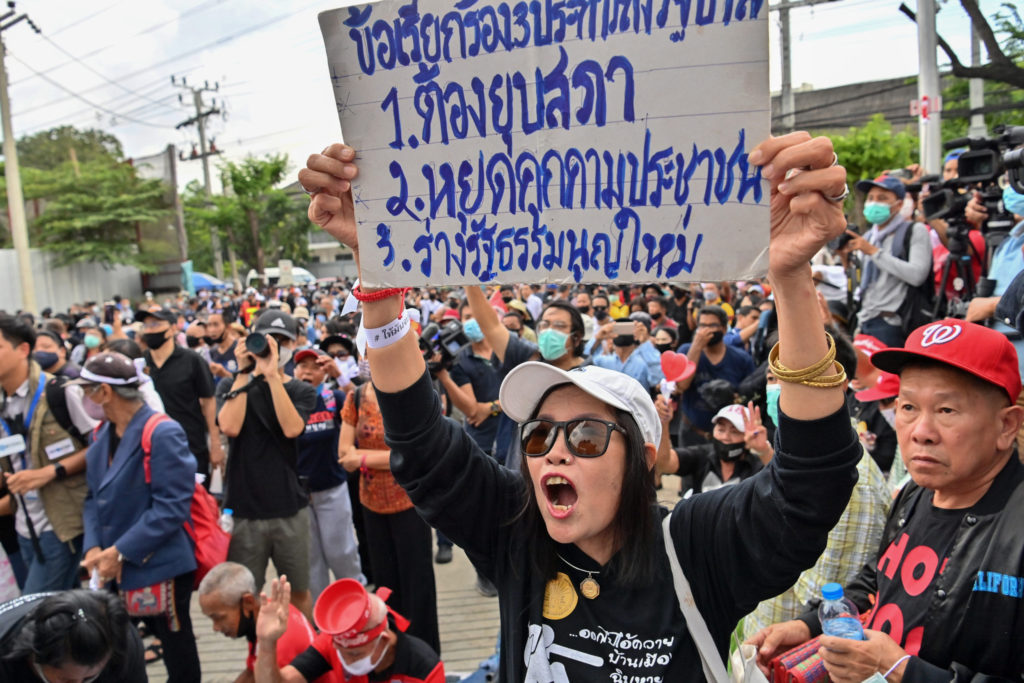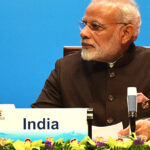
After several major protests in Bangkok, authorities have practiced a degree of restraint, despite the dismantling of a long-held social taboo of voicing public criticism of Thailand’s once-revered monarchy. While Prime Minister Prayuth Chan-o-cha has called for unity, several protest leaders have been charged. Thai authorities have arrested prominent lawyer Arnon Nampa and one of the rappers from the famed “Rap Against Dictatorship” group. Compounding anxieties in Thailand is the looming presence of Covid-19, which has taken its toll on an already reeling economy and the still largely unknown or underexpressed reactions of Thai royalists.
Repression at the hands of the state and or violence by some protestors is well documented – evidenced by the Black May violence in 1992 or the Red Shirt protests in 2010. As Thailand’s current anti-government movement enters the month of October, student activists could take a page from movements of the past to not only broaden their appeal and improve communication, but prevent unnecessary acts of violence.

The use of political jiu-jitsu
When a social movement begins to effectively undermine a regime, the state will calculate the cost of repression and respond accordingly. In the art of political jiu-jitsu, a non-violent tactic developed by American scholar Gene Sharp in the 1970s, it is better to use instances of state violence against the regime by creating domestic and international backlash.
The goal is to make the regime’s strengths a major weakness. However, the tactic works only when violent tendencies are restrained and demonstrators use campaign-style dissemination and implementation of non-violent strategies.
2019’s Hong Kong protests bring some indication of what not to do. After demonstrators flooded the streets following Chief Executive Carrie Lam’s introduction of amendments to extradition laws that would allow extraditions to mainland China, the lack of a coordinated strategy doomed the use of political jiu-jitsu.
While more moderate protestors employed non-violent forms of civil disobedience, more radical elements threw petrol bombs at police. Businesses that were seen as being pro-Beijing were vandalised and Fu Guohao, a reporter from the Communist Party-run Global Times was assaulted due to suspicions of him being a mainland agent. Outbreaks of violence among protestors were later acknowledged as setbacks.
Other examples of political jiu-jitsu have occurred in Iran, Egypt, Turkey and Ukraine, where people have capitalised on regime violence to undermine local regime legitimacy. Perhaps the most famous example occurred in Mahatma Gandhi’s 1930 Salt March, where non-violent protesters undermined the brutal treatment of Indian by British colonial rulers and mobilised hundreds of thousands in support of independence.
This inspired Pastor James Lawson in the 1960s to train dozens of youth to occupy lunch counters in the segregated city of Nashville in the US. Protest organisers at future events in Bangkok need to understand the utility of this tactic and take a page from history.
Decentralised, but not leaderless movements
In protests around the world, the most recent trend is toward leaderless resistance. Dating back to the 2011 Occupy Wall Street movement that broadened into a larger discourse on economic inequality in America, leaderless protests can be effective in eroding regime support or putting political pressure on leaders.
While still plagued with outbreaks of violence and the arrests of thousands, the Chilean protests of 2019 were successful in mobilising people against structural inequalities in society. Chilean President Sebastián Piñera later announced that Chile would no longer host two events that year, the Asia-Pacific Economic Cooperation summit and the 2019 United Nations Climate Change Conference, or COP25.
Leaderless protests have an advantage in that they can disseminate information widely over social media without the interference of a structured hierarchy. Protestors have used peer-to-peer technologies such as Apple’s AirDrop, or social platforms like LINE or Twitter to relay instructions or locations rapidly.
However, leaderless protests have a major downside. They can be controlled or hijacked by anyone and without the presence of coordinated leadership, factions can develop that can undermine non-violent strategies. A lack of leadership can also increase tensions when state violence occurs and protestors lack clear instructions on how to respond.
In a leaderless movement, no one individual sets a standard for what level of violence is deemed acceptable, such as in Hong Kong, where arson, acts of vandalism, and violent responses to police became normalised. Without the presence of a group of decentralised, organised leaders to communicate clear, concise messages about reforms or goals, disillusionment can also set in.
Thailand’s youth-led movement has clearly articulated a 10-point declaration aimed at monarchical reform, which enables students to build bridges or dialogue with authorities when the opportunity arises. Without organisation and dissemination of non-violent tactics, those opportunities for peaceful discussion can turn into regime excuses for implementing a more aggressive response.
Haunting
A rather simple but straightforward approach advocated by Sharp was to exert maximum pressure on officials, through “haunting”. These are direct tactics used to influence or non-violently target regime officials through a variety of means – targeted protests, the use of social media campaigns, using past rhetoric against them, and more.
While Sharp did not focus on institutional mechanisms, partly because dictatorships often have weakened institutional structures, haunting in more democratic countries has seen results. Haunting strategies employed by “Tea Party” Republicans upended incumbent candidates by lobbying specific candidates or targeting issues that are critical to maintaining support in a particular Congressional district. Haunting is an essential strategy because it concentrates energy on specific “pillars” that keep a regime in power.
Activists in Thailand have successfully put pressure on officials in the past, such as Deputy Prime Minister General Prawit Wongsuwon, who has been dogged by allegations of corruption and extravagant spending. While the scandal didn’t remove Prawit from power, it did cause significant public displeasure when Thailand’s National Anti-Corruption Commission cleared Prawit of wrongdoing. As more public officials weigh in on attempts at monarchical reform or the fate of Prayuth’s government, more opportunities will emerge. Past statements by Gen. Apirat Kongsompong on protestors, comparing them to an “incurable” virus are fodder for public haunting.
October was host to two horrific violent events in Thai history, the 1973 student uprising and the October 6, 1976 massacre at Thammasat University, both in Bangkok. Students in the 1970s did not have access to sophisticated technologies and relied primarily on mass mobilisation to undermine public support for the regime of Field Marshal Thanom Kittikachorn.
In 1976, labour activists were hanged for putting up posters protesting the return of Thanom. In a drama skit, a student posed hanging from a tree, but it was portrayed in right-wing media as an effigy of then Crown Prince Vajiralongkorn. Clear communication strategies with specific objectives combined with modern technology might have prevented the outrage that followed.
In this early stage of Thailand’s newest student-led social movement, the power of nonviolent strategies should become commonplace.






